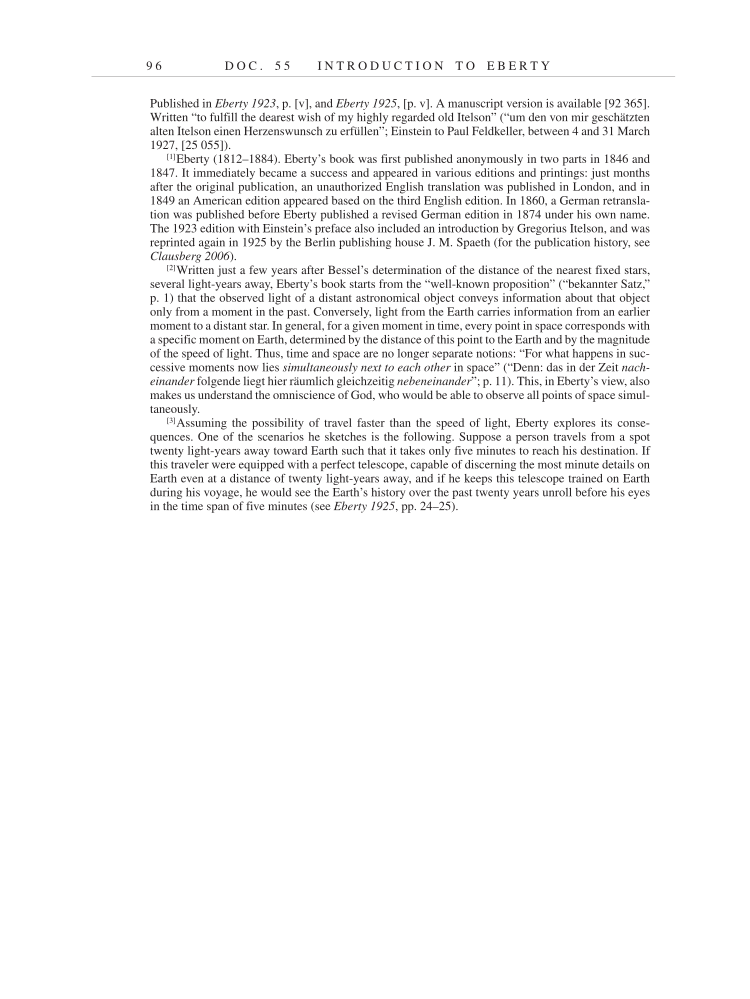9 6 D O C . 5 5 I N T R O D U C T I O N T O E B E R T Y Published in Eberty 1923, p. [v], and Eberty 1925, [p. v]. A manuscript version is available [92 365]. Written “to fulfill the dearest wish of my highly regarded old Itelson” (“um den von mir geschätzten alten Itelson einen Herzenswunsch zu erfüllen” Einstein to Paul Feldkeller, between 4 and 31 March 1927, [25 055]). [1]Eberty (1812–1884). Eberty’s book was first published anonymously in two parts in 1846 and 1847. It immediately became a success and appeared in various editions and printings: just months after the original publication, an unauthorized English translation was published in London, and in 1849 an American edition appeared based on the third English edition. In 1860, a German retransla- tion was published before Eberty published a revised German edition in 1874 under his own name. The 1923 edition with Einstein’s preface also included an introduction by Gregorius Itelson, and was reprinted again in 1925 by the Berlin publishing house J. M. Spaeth (for the publication history, see Clausberg 2006). [2]Written just a few years after Bessel’s determination of the distance of the nearest fixed stars, several light-years away, Eberty’s book starts from the “well-known proposition” (“bekannter Satz,” p. 1) that the observed light of a distant astronomical object conveys information about that object only from a moment in the past. Conversely, light from the Earth carries information from an earlier moment to a distant star. In general, for a given moment in time, every point in space corresponds with a specific moment on Earth, determined by the distance of this point to the Earth and by the magnitude of the speed of light. Thus, time and space are no longer separate notions: “For what happens in suc- cessive moments now lies simultaneously next to each other in space” (“Denn: das in der Zeit nach- einander folgende liegt hier räumlich gleichzeitig nebeneinander” p. 11). This, in Eberty’s view, also makes us understand the omniscience of God, who would be able to observe all points of space simul- taneously. [3]Assuming the possibility of travel faster than the speed of light, Eberty explores its conse- quences. One of the scenarios he sketches is the following. Suppose a person travels from a spot twenty light-years away toward Earth such that it takes only five minutes to reach his destination. If this traveler were equipped with a perfect telescope, capable of discerning the most minute details on Earth even at a distance of twenty light-years away, and if he keeps this telescope trained on Earth during his voyage, he would see the Earth’s history over the past twenty years unroll before his eyes in the time span of five minutes (see Eberty 1925, pp. 24–25).
